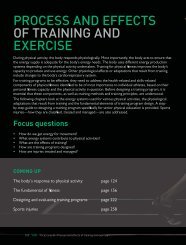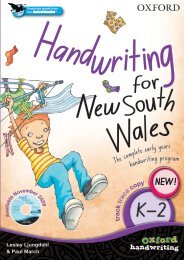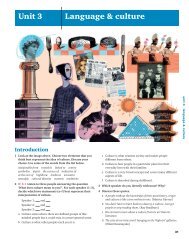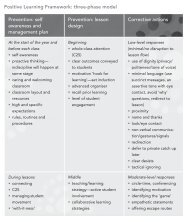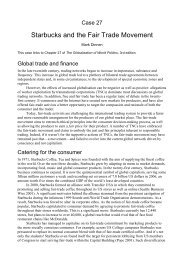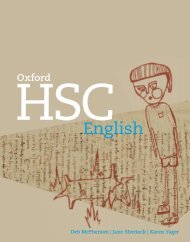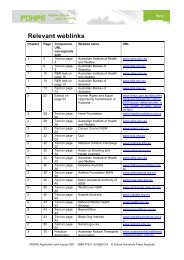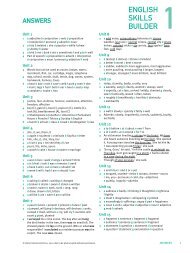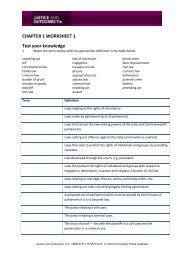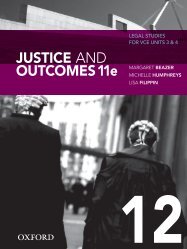The Subjugation of a Distinct 'Nation': East Timor and Indonesia
The Subjugation of a Distinct 'Nation': East Timor and Indonesia
The Subjugation of a Distinct 'Nation': East Timor and Indonesia
You also want an ePaper? Increase the reach of your titles
YUMPU automatically turns print PDFs into web optimized ePapers that Google loves.
Case 10<br />
<strong>The</strong> <strong>Subjugation</strong> <strong>of</strong> a <strong>Distinct</strong> ‘Nation’:<br />
<strong>East</strong> <strong>Timor</strong> <strong>and</strong> <strong>Indonesia</strong><br />
Anne Cullen <strong>and</strong> Lesley Brown<br />
This case links to Chapter 12 <strong>of</strong> <strong>The</strong> Globalization <strong>of</strong> World Politics.<br />
This case provides an overview <strong>of</strong> the situation in <strong>East</strong> <strong>Timor</strong> from the 1975 invasion<br />
by <strong>Indonesia</strong>n military forces, through to 1999 when the international community<br />
intervened. It highlights how marginalisation <strong>and</strong> ethnic subjugation were<br />
strategically deployed during the <strong>Indonesia</strong>n occupation <strong>and</strong> how the brutality <strong>of</strong> that<br />
time fuelled the desire for <strong>Timor</strong>ese independence.<br />
<strong>The</strong> invasion <strong>of</strong> <strong>East</strong> <strong>Timor</strong> by <strong>Indonesia</strong>n forces in 1975 led to its ultimate<br />
annexation. This colonial style move was largely unopposed by the international<br />
community, <strong>and</strong> in 1976 <strong>East</strong> <strong>Timor</strong> became the twenty-seventh province <strong>of</strong><br />
<strong>Indonesia</strong>. Despite nearly twenty-five years <strong>of</strong> oppressive occupation, the <strong>East</strong><br />
<strong>Timor</strong>ese showed a steely determination against assimilation into the <strong>Indonesia</strong>n<br />
cultural identity. Some analysts note that the failure <strong>of</strong> <strong>Indonesia</strong> to engender <strong>East</strong><br />
<strong>Timor</strong>ese loyalty led to such violent <strong>and</strong> continued clashes that the push for<br />
independence in 1999, <strong>and</strong> international support for self-rule, was the inevitable<br />
backlash.<br />
<strong>The</strong> failure <strong>of</strong> <strong>Indonesia</strong> to assimilate the <strong>East</strong> <strong>Timor</strong>ese into the <strong>Indonesia</strong>n<br />
nation also confirms the fundamental differences between the two nations.<br />
Historically, <strong>Indonesia</strong> <strong>and</strong> <strong>Timor</strong> Leste (known as <strong>East</strong> <strong>Timor</strong> under colonial rule <strong>and</strong><br />
<strong>Indonesia</strong>n occupation) share little in common. While <strong>Indonesia</strong> was colonised by the<br />
Dutch <strong>and</strong> known as the Dutch <strong>East</strong> Indies, <strong>East</strong> <strong>Timor</strong> was under Portuguese colonial<br />
rule from 1749 until the Second World War. Shortly after the War, while <strong>Indonesia</strong><br />
began its own path to independence, <strong>East</strong> <strong>Timor</strong> faced the prospect <strong>of</strong> further<br />
Portuguese occupation. <strong>Indonesia</strong> attained <strong>of</strong>ficial nation status in 1949 <strong>and</strong><br />
developed rapidly, while <strong>East</strong> <strong>Timor</strong> languished as a distant <strong>and</strong> poorly administered<br />
colony. In 1975, however, the political mood in Portugal markedly shifted to one<br />
supporting an independent <strong>East</strong> <strong>Timor</strong>. Moreover, international support even saw<br />
FRETILIN (the Revolutionary Front <strong>of</strong> Independent <strong>East</strong> <strong>Timor</strong>) as a legitimate<br />
political actor. Emboldened by this support, <strong>East</strong> <strong>Timor</strong> declared independence on 28<br />
November 1975. Those early pro-independence activists believed that political <strong>and</strong><br />
cultural separation was inevitable.<br />
<strong>The</strong> dream <strong>of</strong> self-determination, however, would need to wait a little longer.<br />
Just one week later, <strong>Indonesia</strong> instigated a massive military campaign, under the guise<br />
<strong>of</strong> a fight against communism, across the whole <strong>of</strong> <strong>East</strong> <strong>Timor</strong>.<br />
Reign <strong>of</strong> terror<br />
<strong>The</strong> initial <strong>Indonesia</strong>n invasion was a show <strong>of</strong> military might involving l<strong>and</strong>, sea <strong>and</strong><br />
air operations. In response, thous<strong>and</strong>s <strong>of</strong> civilians fled to the mountains where roughly<br />
20,000 FRETILIN members <strong>and</strong> their supporters were based. Of those that remained
in their villages, it is estimated that roughly 80% were killed in the first few months <strong>of</strong><br />
the invasion (Solidamor 2005).<br />
After annexation seven months later, the <strong>Indonesia</strong>n military began a brutal<br />
campaign to search out <strong>and</strong> punish suspected Falintil (the military arm <strong>of</strong> FRETLIN)<br />
members <strong>and</strong> their supporters. Clinical village-to-village operations meant many<br />
thous<strong>and</strong>s <strong>East</strong> <strong>Timor</strong>ese were terrorised or killed. Many <strong>of</strong> the remaining population<br />
were subject to forced transmigration from traditional l<strong>and</strong>s <strong>and</strong> communities. This<br />
aggressive transmigration policy intentionally severed family connections in the hope<br />
that local support for FRETLIN would dry up. Re-training camps used cruel physical<br />
<strong>and</strong> psychological techniques on FRETLIN supporters. <strong>The</strong> most ardent supporters<br />
died from torture, disease or starvation.<br />
<strong>Indonesia</strong>n socio-cultural domination was further enforced by introducing<br />
Bahasa <strong>Indonesia</strong> as the <strong>of</strong>ficial language. All news, information <strong>and</strong> entertainment<br />
was now broadcast from Jakarta, which entrenched the new language policy. With<br />
limited access to political, social <strong>and</strong> cultural resources, the <strong>East</strong> <strong>Timor</strong>ese grew<br />
increasingly despondent. <strong>The</strong>y believed the rest <strong>of</strong> the world had forgotten about<br />
them—<strong>and</strong> to a large extent they had.<br />
<strong>Subjugation</strong> <strong>of</strong> a nation<br />
In 1975, the population <strong>of</strong> <strong>East</strong> <strong>Timor</strong> stood at approximately 680,000. During<br />
<strong>Indonesia</strong>n occupation, some 200,000 are estimated to have died, with 18,600 deaths<br />
directly attributed to <strong>Indonesia</strong>n military attempts to suppress any local opposition.<br />
Another 84,200 deaths are attributed to starvation <strong>and</strong> related diseases (CAVR<br />
2007a). <strong>The</strong> majority <strong>of</strong> deaths were in the civilian, non-FRETLIN population. By the<br />
late 1970s, atrocious military tactics, such as the use <strong>of</strong> napalm, indiscriminate<br />
violence, large-scale rape <strong>and</strong> torture, in military <strong>of</strong>fensives did little to win the hearts<br />
<strong>and</strong> minds <strong>of</strong> the <strong>East</strong> <strong>Timor</strong>ese.<br />
Human rights violations<br />
Retrospective investigations confirm large scale human rights abuses. Much <strong>of</strong> the<br />
violence centred on those who assisted FRETLIN/Falintil in their attacks on the<br />
<strong>Indonesia</strong>n military.<br />
United Nations investigations confirmed that intimidation could be<br />
uncompromising, including mass murders in churches where refugees sought shelter<br />
from the violence. In 1999, in Liquicia church, at least fifteen people were killed.<br />
Shortly afterwards in Surai, twenty-six people were murdered <strong>and</strong> their bodies<br />
dumped away from the local church: the tally included, three priests, twelve males,<br />
eight females <strong>and</strong> the remains <strong>of</strong> three bodies that could not be recognised as either<br />
male or female.<br />
Such extrajudicial killings were not the limit <strong>of</strong> human rights abuses. Other<br />
strategies to ensure the failure <strong>of</strong> the independence movement included the forced<br />
migration <strong>of</strong> some 200,000 people into <strong>Indonesia</strong>n-controlled West <strong>Timor</strong>. <strong>Indonesia</strong>n<br />
troops used l<strong>and</strong>, air <strong>and</strong> sea to move the people immediately after the 1999 vote. <strong>The</strong><br />
aim was to destroy any lingering hope <strong>of</strong> nationhood.<br />
Starvation <strong>and</strong> disease<br />
Starvation was prevalent throughout the twenty-five year occupation. By removing<br />
traditional farmers from their ancestral l<strong>and</strong>s <strong>and</strong> forcing their resettlement, age-old<br />
food production channels were destroyed. Where access to arable l<strong>and</strong> was granted,
the successful farming techniques were <strong>of</strong>ten unknown. New terrain meant that<br />
inherited cultivation techniques were no longer useful.<br />
People in the inhospitable forests <strong>and</strong> mountains faced daily challenges to find<br />
enough food. In the late 1970s, starvation was so crippling that the FRETLIN<br />
leadership <strong>of</strong>fered its members the option to surrender to the <strong>Indonesia</strong>n military in<br />
the hope <strong>of</strong> finding sufficient food in the ‘resettlement camps’. <strong>The</strong> camps were no<br />
better. Here too food was scarce, which led to significant health <strong>and</strong> welfare<br />
problems. As the Commission for Reception, Truth <strong>and</strong> Reconciliation in <strong>East</strong> <strong>Timor</strong><br />
explains:<br />
<strong>The</strong> reason why mortality was far higher between 1975 <strong>and</strong> 1999 than would have been<br />
expected in normal peacetime conditions was the large number <strong>of</strong> deaths from hunger <strong>and</strong><br />
illness that were directly related to displacement. <strong>The</strong> Commission has concluded that a<br />
minimum <strong>of</strong> 84,200 people died from displacement-related hunger <strong>and</strong> illness during the<br />
whole period (CAVR 2007b p5).<br />
Forced religion<br />
Under the <strong>Indonesia</strong>n constitution, the nomination <strong>of</strong> a religion is required on all birth<br />
registration documents. <strong>The</strong> choice, however, is limited to one <strong>of</strong> the monotheistic<br />
religions—Judaism, Islam or Christianity. <strong>The</strong> previous colonisation by the<br />
Portuguese had popularised Catholicism among the <strong>East</strong> <strong>Timor</strong>ese. <strong>The</strong> form <strong>of</strong><br />
Catholicism they practiced contained more ancient animist traditions respected by the<br />
<strong>East</strong> <strong>Timor</strong>ese. With little theological sympathy, many took on the Christian religion,<br />
resulting in the loss <strong>of</strong> ancient animist beliefs <strong>and</strong> ceremonies.<br />
How to be the ‘New <strong>Indonesia</strong>n’<br />
It could be argued that <strong>Indonesia</strong>n occupation brought with it some advantages. <strong>The</strong><br />
development <strong>of</strong> basic infrastructure did attract heavy investment in the early years <strong>of</strong><br />
the occupation. Roads, hospitals <strong>and</strong> other vital elements <strong>of</strong> infrastructure were<br />
largely non-existent prior to the occupation. <strong>Indonesia</strong> also ensured that the number <strong>of</strong><br />
schools increased, which substantially raised literacy rates. However, with the new<br />
schools came a new national language to learn <strong>and</strong> a curriculum built around<br />
<strong>Indonesia</strong>n values. As children became indoctrinated they became distanced from<br />
indigenous <strong>Timor</strong>ese culture, again threatening <strong>Timor</strong>ese identity.<br />
Ultimately, however, the attempt to assimilate the <strong>East</strong> <strong>Timor</strong>ese into the<br />
<strong>Indonesia</strong>n nation failed on several levels. <strong>The</strong> attempts to surmount <strong>East</strong> <strong>Timor</strong>ese<br />
cultural <strong>and</strong> ethnical differences fuelled the campaign for independence. <strong>The</strong> violent<br />
<strong>and</strong> brutal subjugation <strong>of</strong> the <strong>East</strong> <strong>Timor</strong>ese also gave moral strength to proindependence<br />
activists. Starvation claimed many lives, but it also bred a rebellious<br />
sentiment. <strong>The</strong> <strong>Indonesia</strong>n military was unable to repress the <strong>East</strong> <strong>Timor</strong>ese for the<br />
same reason most invasions fail: the imposition <strong>of</strong> alien cultural, social <strong>and</strong> economic<br />
values can <strong>and</strong> does act as a catalyst for peoples willing to fight <strong>and</strong> die for their<br />
nation.<br />
Questions<br />
• Which theory would explain how <strong>Indonesia</strong> was able to carry out such violence in<br />
<strong>East</strong> <strong>Timor</strong> without fear <strong>of</strong> international retribution?<br />
• Using the Feminist approach, explain the reasons for <strong>Indonesia</strong>’s failure to<br />
effectively assimilate <strong>East</strong> <strong>Timor</strong> into the <strong>Indonesia</strong>n Identity.
• Using the Post-Colonialism perspective, describe the significance <strong>of</strong> ethnicity <strong>and</strong><br />
culture in <strong>East</strong> <strong>Timor</strong>’s quest for independence.<br />
Web resources<br />
http://www.unhchr.ch/huridocda/huridoca.nsf/(Symbol)/A.54.726,+S.2000.59.<br />
En<br />
<strong>The</strong> United Nations report on violence in <strong>East</strong> <strong>Timor</strong>.<br />
http://www.hrw.org/reports/1995/Indonesi.htm<br />
An overview <strong>of</strong> Human Rights Violations in <strong>East</strong> <strong>Timor</strong>.<br />
http://www.hrw.org/reports/pdfs/i/indonesa/indonesi911.pdf<br />
An article on the events surrounding the Dili Massacre <strong>and</strong> international responses.<br />
References<br />
Commission for Reception, Truth <strong>and</strong> Reconciliation in <strong>East</strong> <strong>Timor</strong> (CAVR) (2007a),<br />
‘Forced Displacement <strong>and</strong> Famine’, Available: from http://www.cavr-<br />
timorleste.org/chegaFiles/finalReportEng/07.3-Forced-Displacement-<strong>and</strong>-<br />
Famine.pdf.<br />
Commission for Reception, Truth <strong>and</strong> Reconciliation in <strong>East</strong> <strong>Timor</strong> (CAVR) (2007b),<br />
‘Unlawful Killings <strong>and</strong> Enforced Disappearances’, Available:<br />
http://www.cavr-timorleste.org/chegaFiles/finalReportEng/07.2-Unlawful-<br />
Killings-<strong>and</strong>-Enforced-Disappearances.pdf.<br />
Solidamor (2005), ‘History <strong>of</strong> <strong>East</strong> <strong>Timor</strong>: <strong>Indonesia</strong>ziation’, Available:<br />
http://web.archive.org/web/20050412104024/www.solidamor.org/english/cont<br />
ent/history/indonezia.htm.



